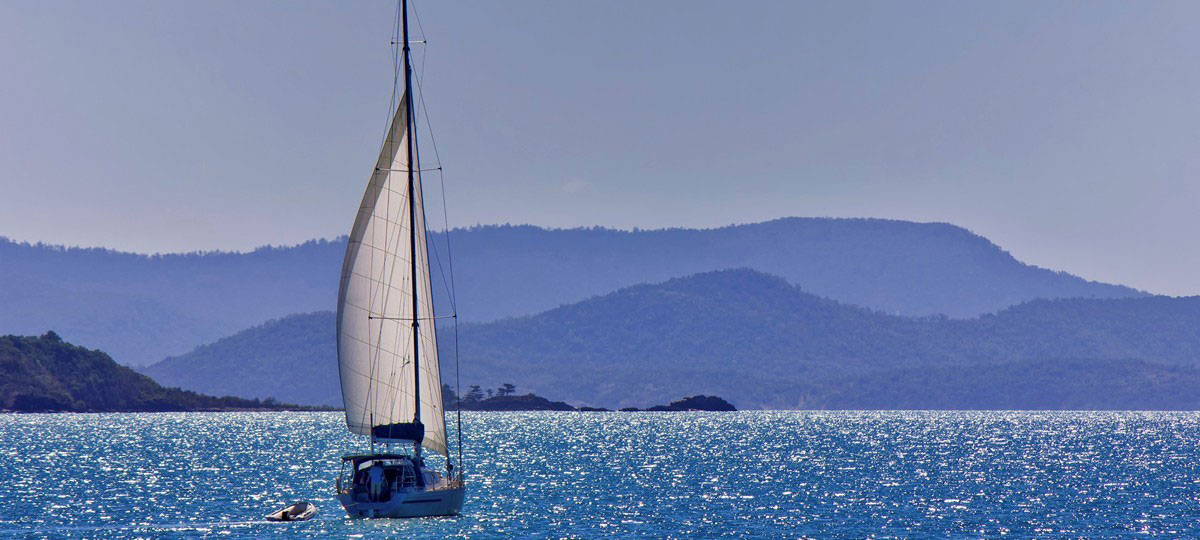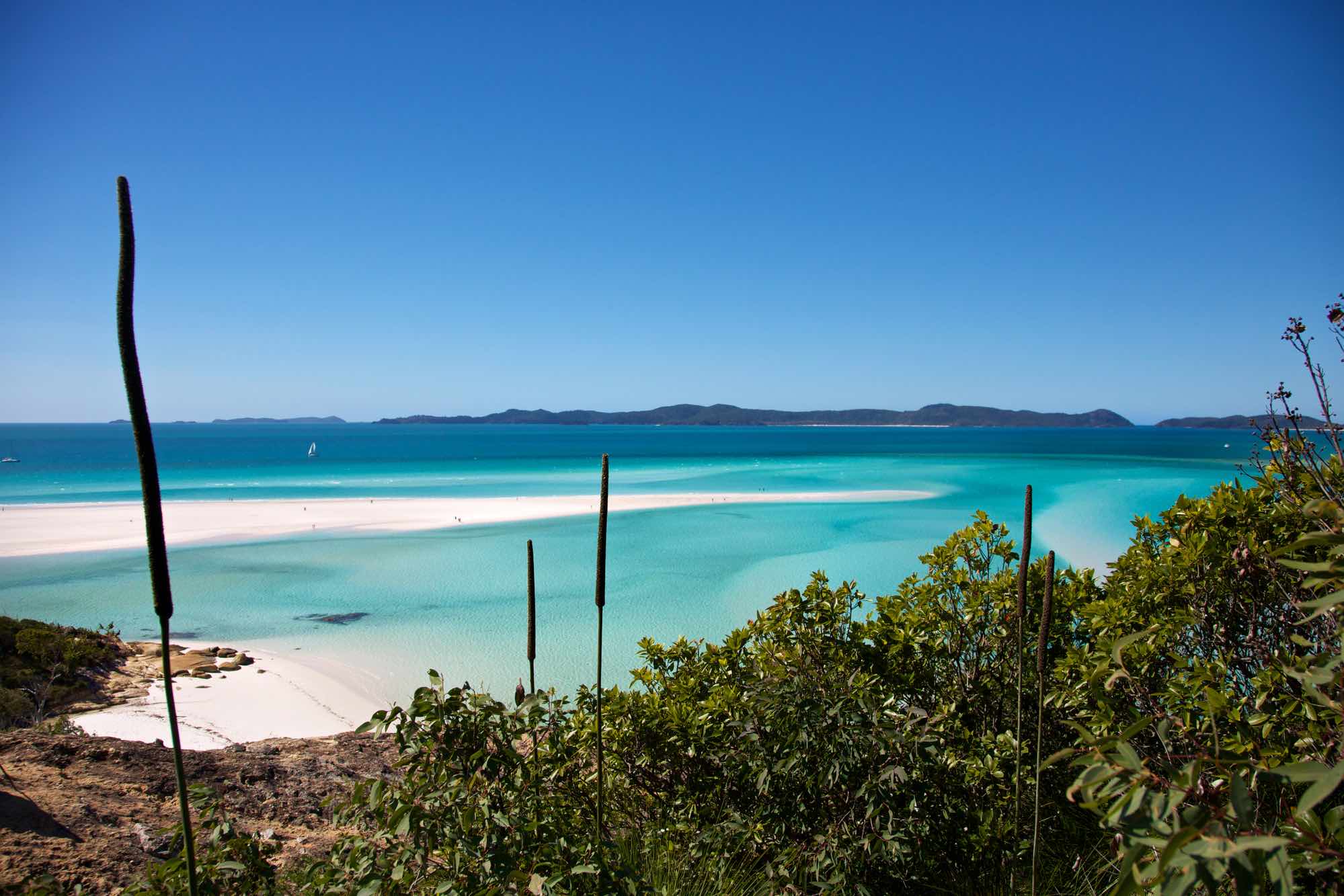Whitsundays Weather
CHECK AVAILABILITY
The tropical weather of the Whitsundays combined with calm seas and light make sailing makes in this region easy and unforgettable
The Whitsundays weather is sub-tropical, which means a climate of humid summers and warm winters. It also means stunning lush natural beauty.
The islands experience a year-round average temperature of 27.4 degrees Celsius (81 degrees Fahrenheit).
The maximum summer temperatures (December, January and February) are around 30 degrees Celsius (86°F). The tropical summer months do receive the highest rainfall, however, rain comes in the form of warm showers which are typically brief.
Winter weather in the Whitsundays (June – August) usually hovers in the high 20’s and is mostly fine with great conditions for swimming and water sports. Nights can be slightly cooler so it’s a good idea to pack a light jumper.
The different seasons in the Whitsundays offer new opportunities. While the seas are calm and a welcoming 25 degrees Celsius (77 degrees Fahrenheit) all year round, you may choose to visit in the drier months to take full advantage of full sunny days. Or you might jump on our low season rates and enjoy hotter days, waterfalls and tropical showers.
Whitsundays Weather: Average Temperatures
| Average Temperatures | Jan | Feb | Mar | Apr | May | Jun | Jul | Aug | Sep | Oct | Nov | Dec |
|---|---|---|---|---|---|---|---|---|---|---|---|---|
| Av Min C | 25 | 25 | 24 | 23 | 21 | 18 | 18 | 18 | 20 | 22 | 23 | 24 |
| Av Max C | 31 | 30 | 29 | 28 | 26 | 24 | 23 | 25 | 26 | 28 | 31 | 31 |
| Av Max F | 88 | 86 | 84 | 82 | 79 | 75 | 73 | 77 | 79 | 82 | 88 | 88 |

When is the best time to visit the Whitsundays?
Since we’re located in the tropics, the Whitsundays weather pattern includes a wet season which generally runs from December to March. It’s a great time of year to enjoy waterfalls, heat and fewer crowds. You can also save up to 45% on the cost of your bareboat charter.
Our dry season is in winter, running from June to August and it coincides with whale season, where humpback whales migrate to have their babies in the shelter of the islands. During the winter, the average daily temps range from 18 degrees Celsius (64°F) to 25 degrees Celsius (77°F) with very little rain.
September is probably one of the most sought after months to visit the region with minimum monthly rainfall for the year and average maximum daily temperatures a glorious 26 degrees Celsius (78°F).
The best time to visit the Whitsundays will depend on what things you want to do, your budget and priorities. Every season has something different to offer, so if you aren’t locked into visiting the Whitsundays within a specific time frame, we suggest looking at the pros and cons of the seasons and finding a time that suits you.
Tides
It’s important to understand the tides when you are boating in the Whitsundays. The tides in the Whitsundays can have a significant effect on your cruising holiday.
The approximate tidal range is from 1.3m at neap tides and to a 3.8 m at spring tides. Even if you are not a tide guru, the important things to keep in mind is that there can be a large variance between high and low tide and some areas will experience strong currents. We will take you through this when we do your briefing on your vessel.
Stinger Season
October through to May is stinger season in the Whitsundays however, that doesn’t mean you can’t get in the water. You can hire stinger suits from us all year round. Not only do they protect you from stingers but they will also protect from the sun and keep you warmer during the cooler months.

Cyclones
Cyclones season does coincide with the wet season in Queensland, however, the likelihood of a cyclone directly impacting Queensland is low – and one impacting the Whitsunday region is even lower.
We have access to state of the art forecasting technology and local authorities who are all very experienced at monitoring cyclones in the interests of public safety. We can see when a large storm is brewing a week or more ahead of time and we’re given several days’ warning if it’s looking like the Whitsundays will be directly affected. Once formed, cyclones tend to move slowly at about 8 to 12 knots, giving us plenty of notice if one is developing.
In the unlikely event of an approaching storm, we would recall all of the boats to our base at Shute Harbour or to Hamilton Island Marina with ample notice for your safety. We strongly advise that if you are chartering a yacht in the Whitsundays’ wet season, as an extra precaution, you should take out travel insurance to ensure that your costs are covered if there is a boat recall due to extreme weather.
Helpful Whitsundays Weather Links
Get In Touch
Freecall
1800 075 000
International
+61 7 4946 9232
Location
6 Bay Terrace
Shute Harbour QLD 4802
Australia
Office Hours
8am – 5pm Weekdays
8am – 4pm Weekends
8am – 4pm Public holidays
Ready to Explore?
Ask us anything in the form below. If you want to get a quote or make a booking, please use our booking enquiry form.


